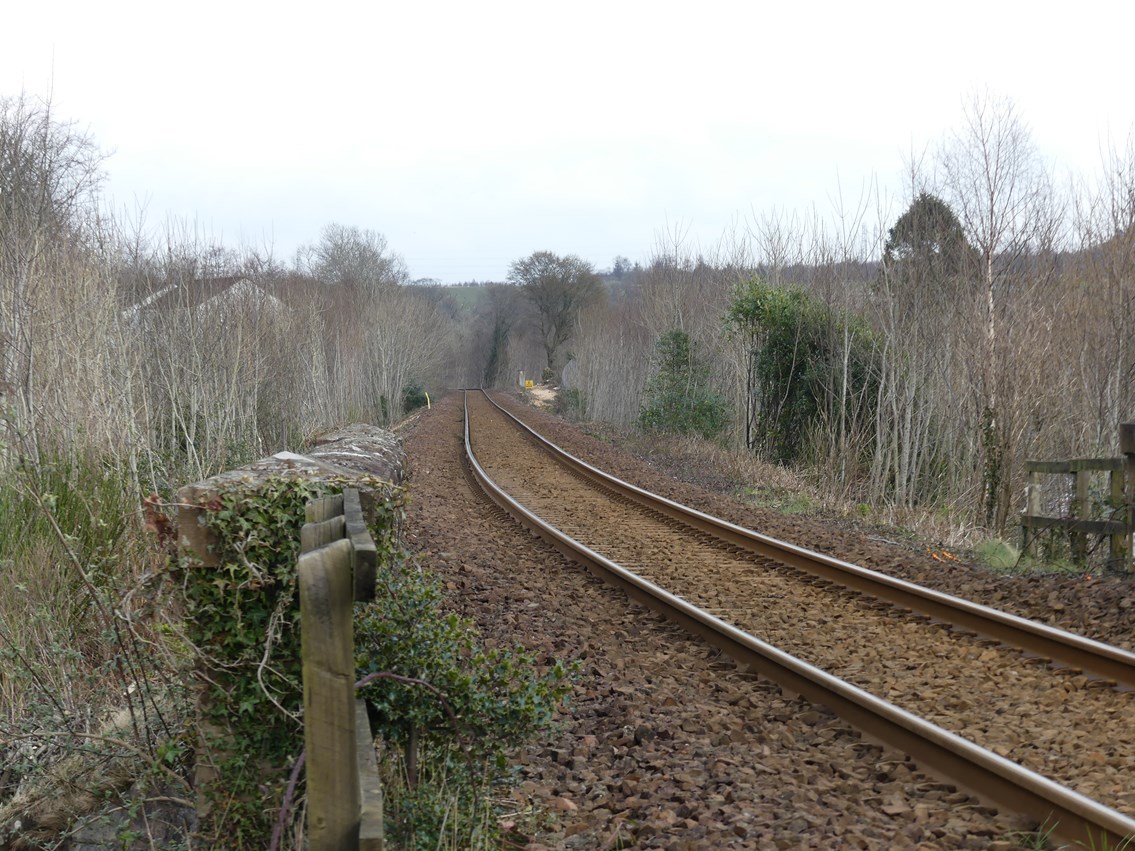Wednesday 13 Apr 2022
Replanting marks successful completion of West Highland Line vegetation project
- Region & Route:
- Scotland’s Railway: Scotland
Network Rail has successfully completed a project to improve safety and performance on the West Highland Line between Craigendoran and Helensburgh.
Trees and encroaching vegetation were removed along more than two kilometres of the line to reduce the impact of dangerous leaf and tree fall.
If left unmanaged vegetation can pose a serious risk to rail safety as trees can fall onto the line during bad weather or when overgrown, branches and foliage can obscure signals from a driver’s view.
In autumn, leaves on the line can affect train wheel traction to the rail which affects braking distances and acceleration, and interferes with signalling systems.
Following the clearance work, native trees and shrubs were re-planted alongside around 1,200 new berry bearing plants in an effort to protect wildlife, the environment and nearby communities.
It’s all part of a trial designed to help Network Rail realise its ambition of seeing no net loss of biodiversity by 2024, with an overall net gain by 2035.
Kirsty Armstrong, Scheme Project Manager for Network Rail said: “While our priority is the safety and performance of the railway, this project has been planned and delivered to protect wildlife and promote biodiversity.
“We’re making positive efforts towards managing our lineside areas in a more environmentally-friendly way as part of our commitment to a better, greener railway.
“We’ve taken a number of proactive steps to offset the impact of tree removal and created a mixture of habitats which support a range of species alongside the railway.
“It sets the standard for sustainable management of the lineside environment for the future.”
With the introduction of new berry bearing trees and shrubs, the lineside area will become a more diverse corridor with native species that benefits the surrounding wildlife. Hawthorn, holly, blackthorn and elder trees native to the area, have also been planted, and these are better suited to the railway environment due to their slow growth rate, low height and minimal leaf-fall impact.
Bat and bird boxes have been installed to increase the availability of bat roost and bird nest sites within the railway corridor.
In addition, habitat piles – logs stacked on top of each other to simulate fallen trees - have been created along the railway corridor. This is designed to add to the existing natural features and to offer sheltering opportunities for insects, hedgehogs and nesting birds among others.
The new lineside environment will be routinely maintained to manage the regrowth of plants and trees. And Network Rail will monitor the biodiversity and offsetting measures that are in place to make sure wildlife and communities are protected while railway performance is improved.
Notes to Editors
Notes to Editors
The species diversity between Craigendoran and Helensburgh will be improved as the project will see Network Rail re-plant and routinely maintain this area to manage the regrowth of woodland, improve biodiversity and offset the impact of the work on the environment.
Several environmental measures were implemented at this location to compensate for the vegetation management work.
These measures included:
- Maintaining a large proportion of the existing natural corridor and creating additional features throughout to enhance the habitats and the biodiversity on site. This will help support nesting and foraging birds, roosting bats, sheltering reptiles, small mammals and hedgehogs.
- Installing eight bat and eight bird boxes along the route to increase the availability of bat roosting and bird nesting sites.
- Using ethical tree guards instead of conventional plastic ones, as a more environmentally-friendly option.
- Multiple habitat piles were created from felled materials to support invertebrates, small mammals, including hedgehogs, and nesting birds. These were signposted using biodegradable signs.
Contact information
Passengers / community members
Network Rail national helpline
03457 11 41 41
Latest travel advice
Please visit National Rail Enquiries
Journalists
Eddie Harbinson
Media Manager
Network Rail
edward.harbinson@networkrail.co.uk
About Network Rail
We own, operate and develop Britain's railway infrastructure; that's 20,000 miles of track, 30,000 bridges, tunnels and viaducts and the thousands of signals, level crossings and stations. We run 20 of the UK's largest stations while all the others, over 2,500, are run by the country's train operating companies.
Usually, there are almost five million journeys made in the UK and over 600 freight trains run on the network. People depend on Britain's railway for their daily commute, to visit friends and loved ones and to get them home safe every day. Our role is to deliver a safe and reliable railway, so we carefully manage and deliver thousands of projects every year that form part of the multi-billion pound Railway Upgrade Plan, to grow and expand the nation's railway network to respond to the tremendous growth and demand the railway has experienced - a doubling of passenger journeys over the past 20 years.
Follow us on Twitter: @networkrail
Visit our online newsroom: www.networkrailmediacentre.co.uk

